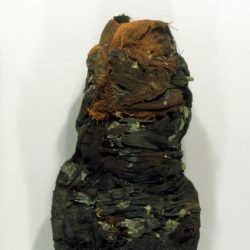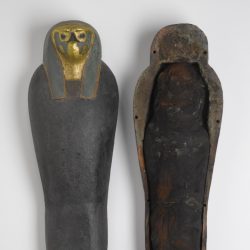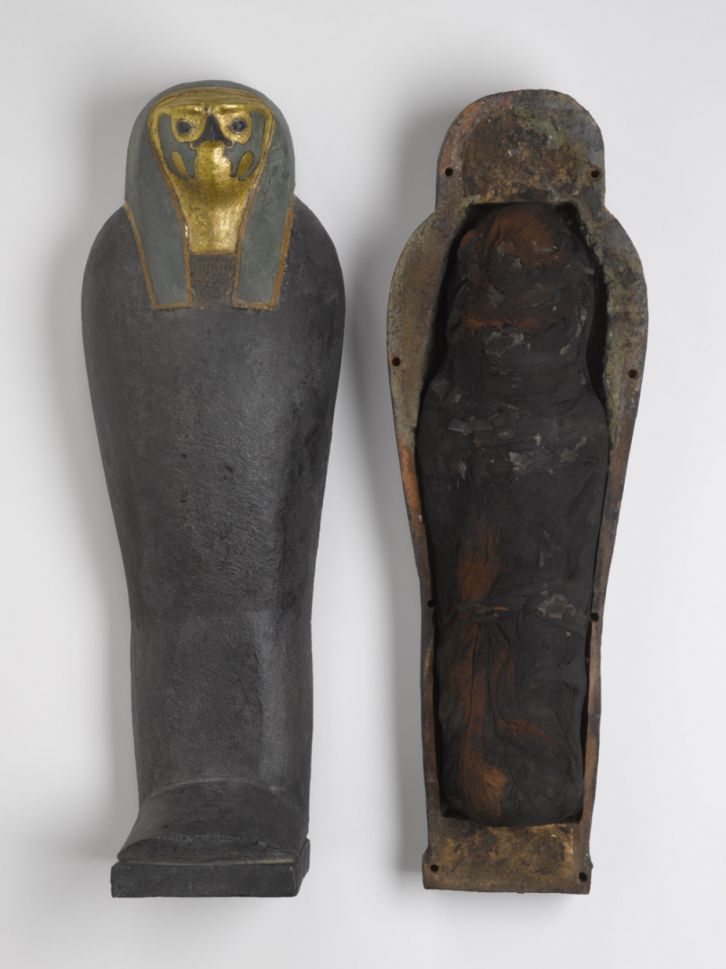What in the World Is a Grain Mummy? (Story)
July 20, 2019 – January 8, 2020
West Building, Gallery 241 (Mesoamerican Gallery)
While researching the ancient Egyptian collection, NCMA Egyptologist Caroline Rocheleau discovered that an object in the Museum’s collection once thought to be a falcon mummy is, in fact, a grain mummy. Rocheleau used analytical observation to analyze the mummy, and confirmed her hypothesis using medical technologies. The mummy was at one time believed to be a fake because it did not contain bird bones.
Rocheleau is curating What in the World Is a Grain Mummy? in order to present this humble bundle and its falcon-shaped coffin for the first time and to unravel the mysteries of the NCMA’s only Egyptian mummy. The exhibition focuses on how the scientific method was used to re-establish a questionable item as a genuine Egyptian object. It also looks into the concept of grain mummies. For instance, it explains their role in ancient Egyptian funerary religion and discusses the importance of emmer wheat and barley in ancient Egyptians’ diet, economy, and religion. Moreover, the exhibition also explores why the grain mummy was once confused with a falcon mummy and compares it to an actual ancient Egyptian falcon mummy.
Teachers can learn more about the exhibition and request exhibition related school tours.
Curator Caroline Rocheleau tells the story of the NCMA's Grain Mummy.
What in the World Is a Grain Mummy?
These photos show NCMA Egyptologist Caroline Rocheleau using a CAT Scan to investigate the internal contents of the grain mummy.
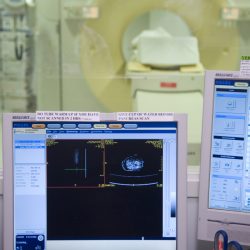
Wake Internal Medicine Consultants, Inc. during CAT of Egyptian Grain Mummy at request of Curator of Egyptian Art Caroline Rocheleau.

l to r: Unid., Technician Billie Jean Messer, Rocheleau, Brown Chief Conservator Bill Brown observes CAT scan of Grain Mummy at Wake Internal Medicine Consultants, Inc. at the request of Curator of Egyptian Art Caroline Rocheleau.
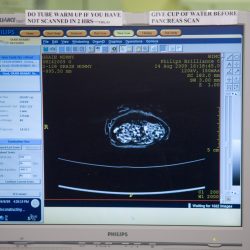
Wake Internal Medicine Consultants, Inc. during CAT of Egyptian Grain Mummy at request of Curator of Egyptian Art Caroline Rocheleau.
